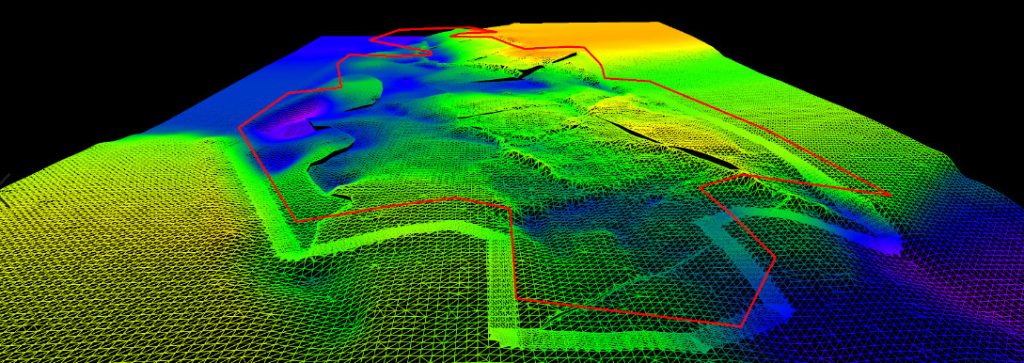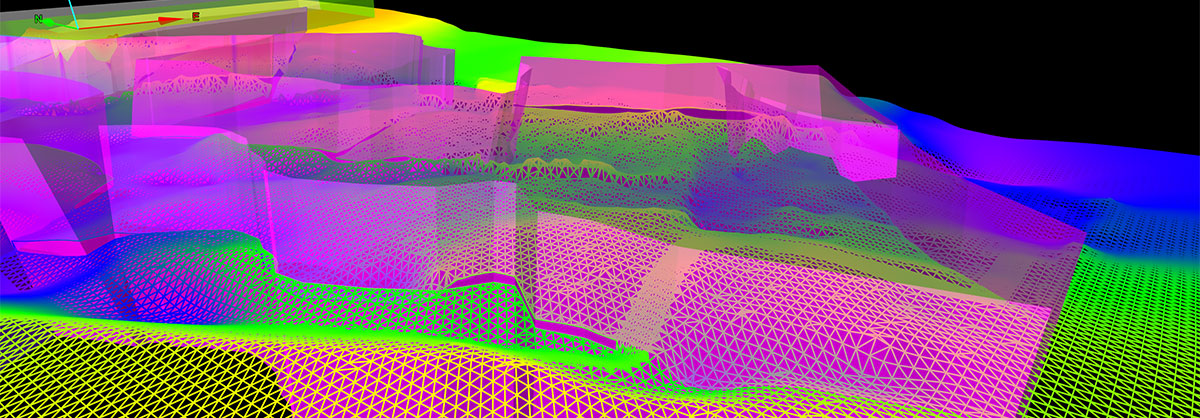March 2021 Issue Index
Model merging
Vulcan 2021 introduces two new applications to address a common request for combining multiple models into a single multi-resolution surface.
Geologists who deal with surface models want to be able to vary the resolution of the models to reflect the input data and combine multiple models into a single multi-resolution surface. Vulcan 2021 introduces two new applications to address this need.
Merge Surface Models accepts two individual grids or triangulations as input, with the option to provide a polygon representing the merge zone or simply use the natural extent of the surfaces.
Two entire directories of surfaces can be supplied as input and the option will merge the two versions of the same models in a batched process.

To ensure there is no dramatic step between one model and the next, the user defines a merging width and the option will intelligently morph from one surface to the next.
Stratigraphic geologists who employ Block Faulting will appreciate the second application of this technology – within the Grid Calc faulting options.
Creation of block fault solids can sometimes require faults to be drawn out beyond their known geological extent to allow closure of the solid triangulations used. This can result in artefacts within the resultant surface models, showing faults that do not actually exist!
Geologists can now specify a polygonal extent to faulting. The resultant surfaces will be a merge between the block faulted surface and an unfaulted version of the same surface, removing artefacts and resulting in a final surface representing the best of both worlds.
- New Vulcan modelling tools allow geologists to better understand structures
- Automated solutions help streamline day-to-day geological modelling tasks
- Merging multiple models into a single multi-resolution surface without artefacts delivers an optimum final surface for design and planning

